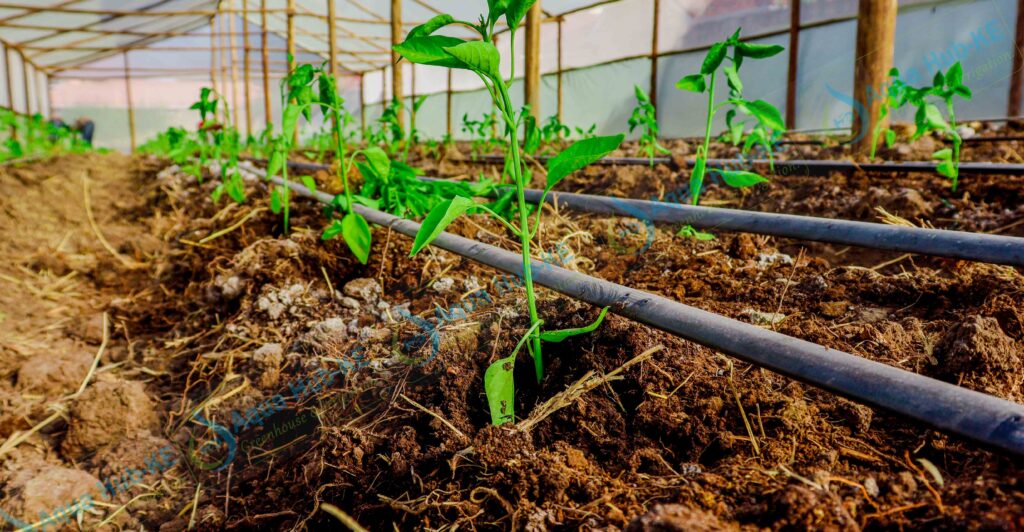Top10 Drip Irrigation Products in Kenya : 2024
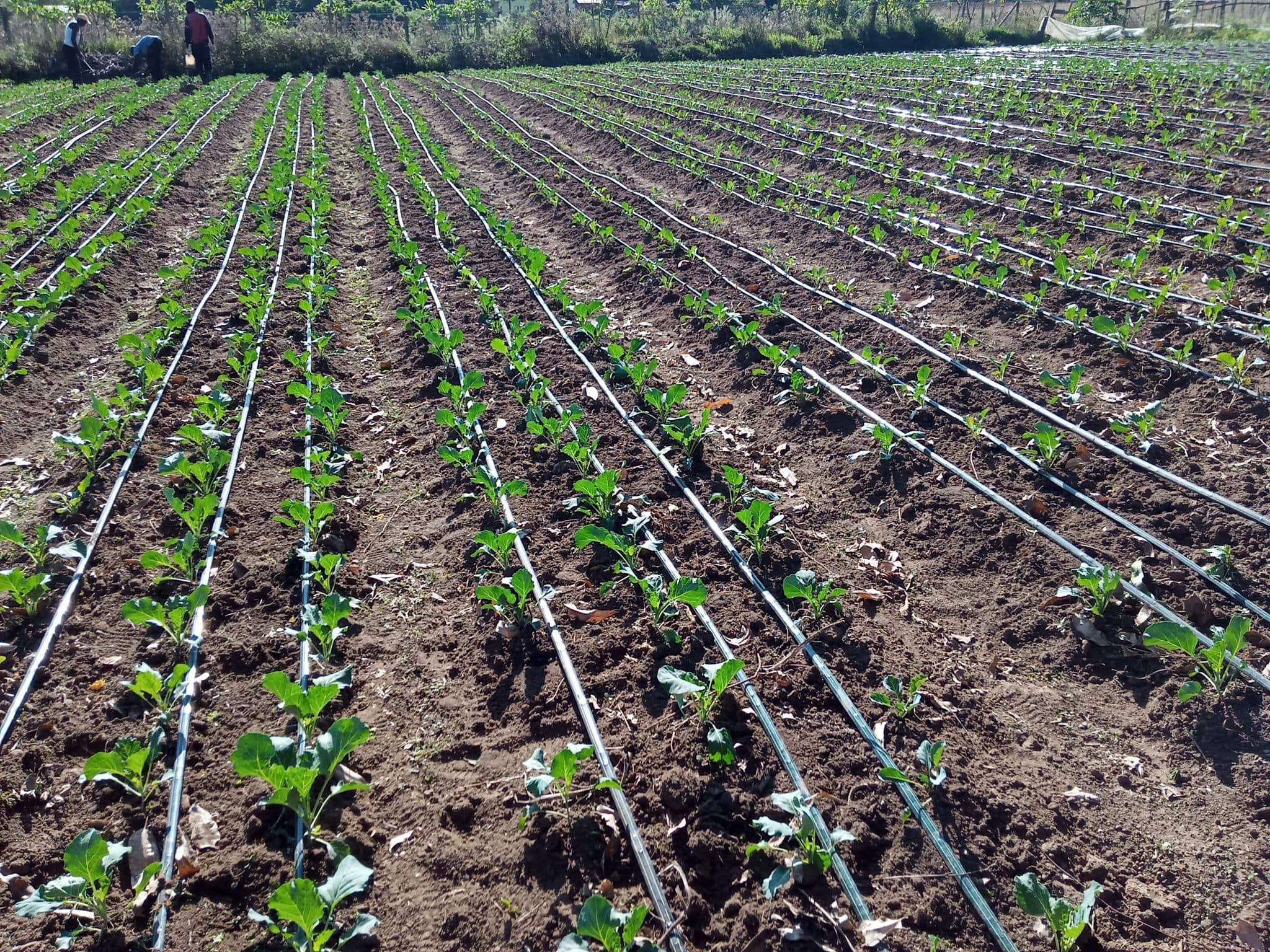
Aqua Hub Kenya has quality drip irrigation kits and accessories which are best for variety of greenhouse and field crops.
7+ Crops suitable for Drip Irrigation in Kenya 2024
There are various crops that are compatible with production under drip irrigation. Currently, there are more than 7 categories of crops that produce more income when watered with drip irrigation.
Call 0790719020 for assistance.
Why Drip Irrigation for Crops
- Many crops do well under drip irrigation as it gives efficiency, water balance and optimum growth conditions.
- Getting to understand the valuable crops that do well under drip irrigation is important to maximize productivity.
- Water is a major growth condition, thus choosing a good irrigation system before growing is a step to begin with.
- Drip irrigation is the best method to water crops. It saves a lot of water while also allowing sufficient reach to crop.
- Another reason is the direct supply of water to the root surfaces thus allowing immediate absorption.
Drip Kit Components
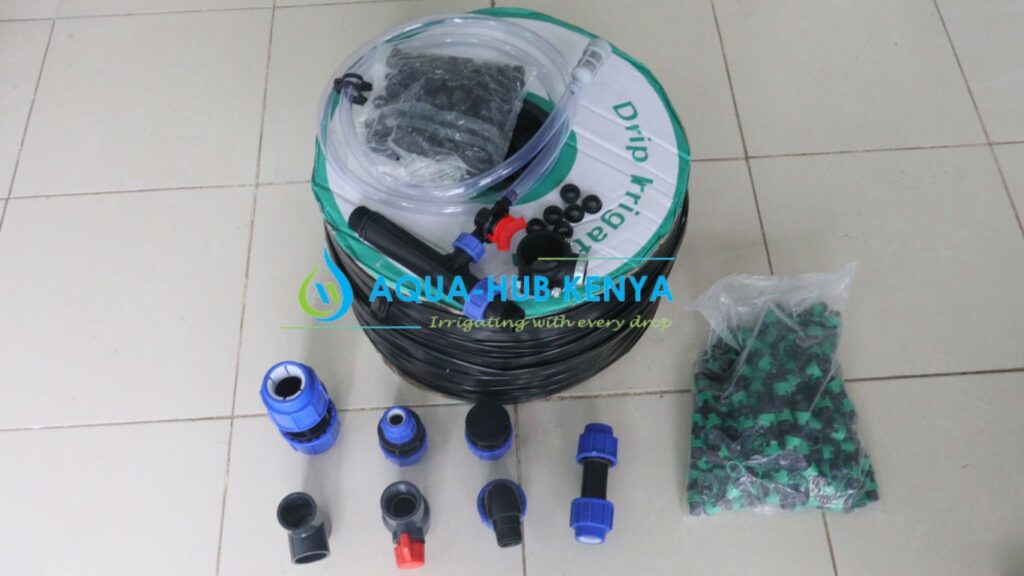
- Mainline pipes
- Sub-mainline pipes
- Driplines or drip emitters
- Control Valves
- Check Valves
- Water Filters
- End Caps
- Fertilizer Kit
- Water tanks and connectors
- Connectors & Fittings
7+ Main Crops for Drip Irrigation
Onions
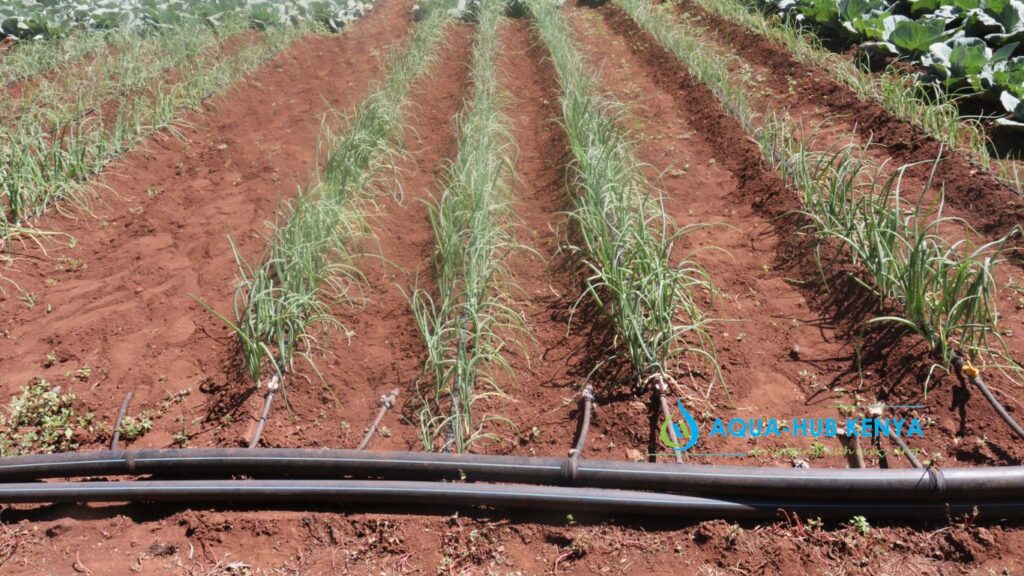
Onion crops among the most valuable crops that grow well when grown under drip irrigation. Onions develop quality and large bulbs with balanced and well drainage in the soil. Drip irrigation supplies water rate at the desired level which allows soil warmth and enough moisture. You can control and stop drip irrigation 3 weeks to harvest thus prevent bulb rot.
Capsicum
Capsicum fruits grow healthy and to a maximum size when grown under drip irrigation. With drip irrigation, weed growth is suppressed and the capsicum plants are free from pests and diseases.
Soil nutrients also remain sufficient when weeds are eradicated from the farm.
Tomato
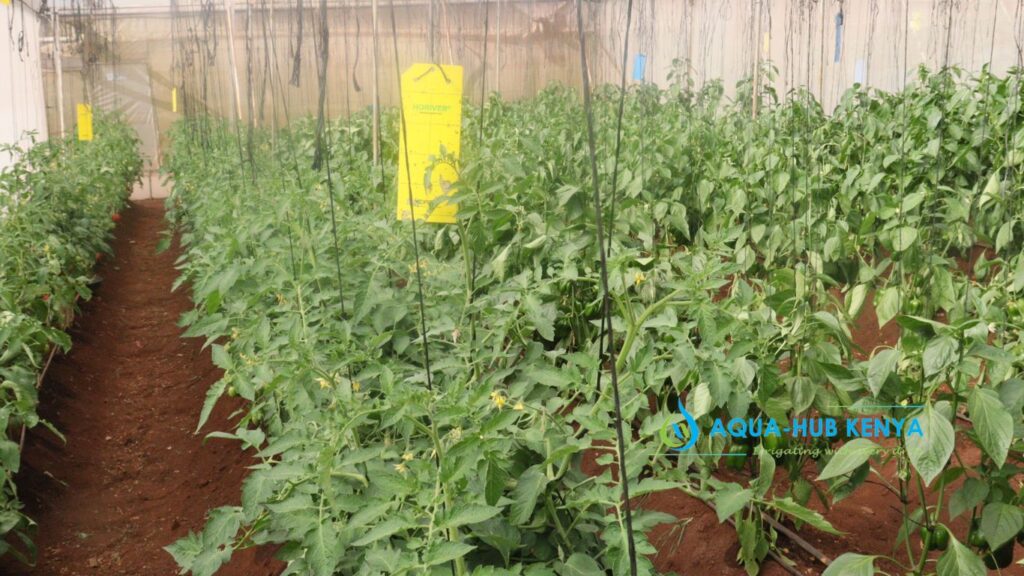
Tomato plants are the best crop to irrigate using drip irrigation method. The plant loves warm conditions, high water, and nutrient intake for quality and big fruit development.
It offers water supply to the roots thus preventing the rot of fruits and fungal infections to the foliage.
Fruits such as Citrus, Apple, Avocadoes and Strawberries
Fruit crops require a lot of water especially during the fruit formation stage. You can use drip irrigation to maximize growth on low water or dry periods. With drip irrigation fruits can be free from water stress which normally causes most of them to dry or shed leaves.
Vegetables
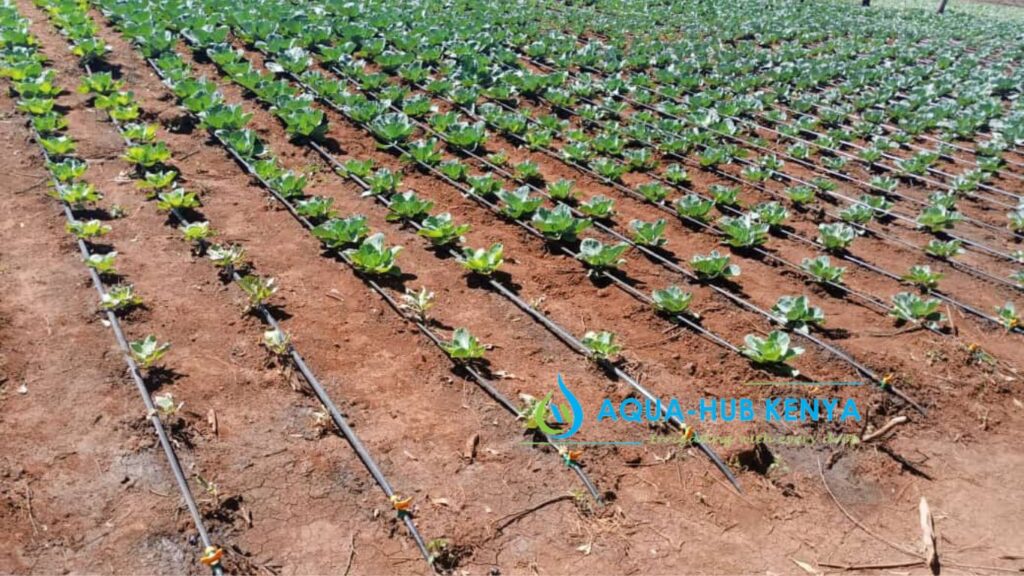
Growing vegetables such as spinach and kales requires much water, nutrients and less weed growth. With drip irrigation you can produce fleshy leafy green kales and big cabbage bulbs. The method allows addition of fertilizers to the vegetables in the planting lines and reach them by dripping with water.
Corn
You can water corn plants using underground drip irrigation and enhance maximum root growth and bumper harvest.
This method delivers water deep beneath the root surface and reaches plants through the roots.
Cotton
Production of a higher yield of cotton fiber is through drip irrigation. The plant can grow well with enough water supply and prevents the risk of fungal diseases.
Other Crops
You can also produce other crops such as berries, beans, grapes, melons, peppers, herbs, and flowers through irrigation with drip methods.
Call 0790719020 for assistance.
Understanding How Drip Works and How to Apply it for Crops
Drip irrigation system involves the connection of mainline pipes, sub mainline pipes and delivery or dripline pipes. This connection ensures sustainable supply and control of water to various sections of the farm through control valves.
When water connection is opened water flows from the source to mainline pipes. It goes through sub mainline pipes and enters the driplines which distributes to crops.
Drip lines have equal hole spacing which lets out water to crop root zones.
Before you decide to apply drip irrigation for your plants you should consider the size of your farm, soil type and topography.
Knowledge of farm size helps calculate a rough estimate of the resources you need and estimate of the cost budget.
Different soils have different water retention rates thus it is crucial for considering the suitability of working with drip irrigation. Black, red cotton soils and other cotton soils are suitable while clay is waterlogging thus unsuitable.
Methods of Installing Drip Irrigation
There are two ways to set up drip irrigation
- Surface Drip Irrigation Layout – Model of drip irrigation that has pipes and drip emitters laid above the soil surface along plant lines.
- Underground Drip Irrigation Layout – Model of drip method that has connection of pipes and emitters below the ground surface.
Water reaches the root surface by seepage and root maximum growth for absorption.
Preparation to Propagation and Irrigation of Crops suitable for Drip Irrigation
To begin is to get the growing space ready for propagation and installation of drip irrigation kits. It is wise to set up drip irrigation on an already prepared land to avoid tampering with connection later.
All the bushes and thorns need to be cleared, farm tilled, and unsuitable rocks removed from the farm. Proceed by making beds for laying drip lines. Leave 1 M between beds and approximately 1 ft from both edges of the farm for trenches to lay mainline pipes.
Once done, install drip irrigation using the following steps.
- Lay mainline and sub-mainline pipes on the trenches.
- Connect mainline pipes to sub-mainline pipes using connectors.
- Set up a point to install control valves in between the mainline pipe and sub-mainline pipe branch.
- Connect sub-mainline pipes to delivery pipes.
- Connect delivery pipe to drip lines
- Fit end caps on sub-mainline pipes and drip tapes.
- Open the water connection for testing.
How to Select crops suitable for Drip Irrigation
To identify whether a crop is best for irrigation through drip, you need to consider the factors below.
- Which type of soil your farm holds. Does it have the right water retention rates? Is it fertile? What is the soil structure? Is it compact or lose?
- Water availability and quality – Where do you source your water? Is it a reliable source that can sustain your crops on prolonged droughts? How clean is the water? Does it have chemicals or pollutants in it?
- The crop water requirements – Which crops require less water and which ones require more water? Which crops can meet your available water levels in your reservoirs.
- Nutrient Requirements – Which crops require higher nutrient uptake? Such crops require drip irrigation to enhance effective fertilizer addition.
Call 0790719020 for assistance.
Drip Irrigation Kit Prices in Kenya
We have prices for quarter acre drip kits, one-eighth, half an acre and one acre
| Size / Lines Per Bed | Price for 1 Line (KES) | Prices for 2 Lines (KES) | Prices for 3 Lines (KES) |
| 1 Acre | 65,000 | 95,000 | 130,000 |
| 1/2 Acre | 30,000 | 45,000 | 60,000 |
| 1/4 Acre | 16,000 | 25,000 | 35,000 |
| 1/8 Acre | 10,000 | 15,000 | 20,000 |
6 Tips to Enhance efficient irrigation of crops with drip Irrigation.
- Choose the right crops to ensure that you get the best return on your farming investment through drip irrigation.
- Adopt the best drip irrigation kits and accessories from our shops. Aqua Hub LTD has the best drip lines, pipes, fittings, and filters.
- Consider appropriate crop spacing and drip line spacing depending on the type of crop to prevent overcrowding.
- Apply quality and recommended fertilizers to ensure soil fertility lasts a while. Conduct research or consult us for leads on the best agronomists and suppliers of fertilizers and seeds.
- Grow quality and viable seedlings on your farms. Get the hybrid seeds from reputable suppliers or propagate your own seeds with the right conditions. You can purchase our seedling trays and install a shade net to enhance propagation of seedlings.
- Apply mulching paper or plastic mulching films to prevent moisture loss and weed growth on your crop fields.
- Boost your water availability. Expand your ways of collecting water by installing dam liners to collect rainwater to boost water supply for drip irrigation. We have the best dam liners in Kenya. Call 0790719020
NB: We have all these effective solutions to boost sustainable and maximum production.
How to Maintain drip Irrigation Kits and crops
- Frequently monitor your drip lines and the entire drip irrigation system to notice leaks and any other problem.
- Repair or replace broken pipes early to prevent water loss and nutrient leach.
- Flush the irrigation system to remove clogs and dirt particles.
- Check and clean water filters to prevent clogging.
Call 0790719020 For Drip Accessories and Info.

